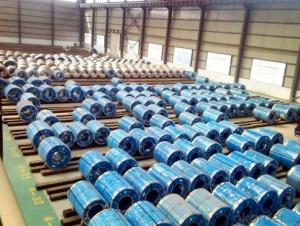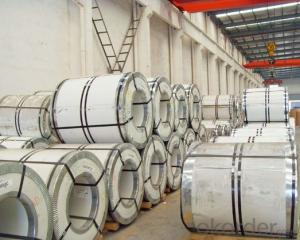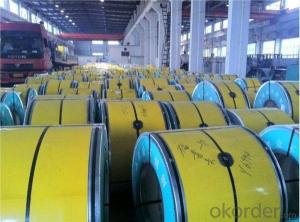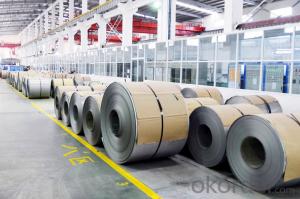Stainless Steel Coil 304/316 Hot / Cold Rolled Grade NO.1
- Loading Port:
- Tianjin
- Payment Terms:
- TT OR LC
- Min Order Qty:
- 20 m.t.
- Supply Capability:
- 4000 m.t./month
OKorder Service Pledge
OKorder Financial Service
You Might Also Like
Stainless Steel Sheet/ Coil 304/ 316/ 304L/ 316L Hot rolled & Cold rolled
Product details:
Item | 304/ 316 stainless steel coil manufacturer |
Technical | Hot rolled and cold rolled |
Standard | ASTM A240,GB/T3280-2007,JIS4304-2005,ASTM A167,EN10088-2-2005,etc |
Surface | 2B,2D,BA,NO.1,NO.4,NO.8, 8K, mirror ,checkered ,embossed ,hair line, sand blast, etching, etc |
Thickness | 0.01~30mm |
Width | 1000mm,1219mm,1500mm,1800mm,2000mm,2500mm,etc |
Package | Standard export package, suit for all kinds of transport, or as required |
Export to | Ireland,Singapore,Indonesia,Ukraine,Saudi Arabia,Spain,Canada,USA, Brazil,Thailand,Korea,Iran,India,Egypt,Malaysia,Dubai,Viet Nam,Peru,Mexico,South Africa,Kuwait,Oman,Russia,etc |
Container Size | 20ft GP:5898mm(Length)x2352mm(Width)x2393mm(High) 40ft GP:12032mm(Length)x2352mm(Width)x2393mm(High) 40ft HC:12032mm(Length)x2352mm(Width)x2698mm(High) |
Application | Stainless steel coil applies to construction field, ships building industry, petroleum, chemical industries, war and electricity industries, food processing and medical industry, boiler heat exchanger, machinery and hardware fields. Stainless steel coil can be made according to the customers requirements. |
Contact | If you have any question,please feel free to contact me . We are sure your inquiry or requirements will get prompt attention. |
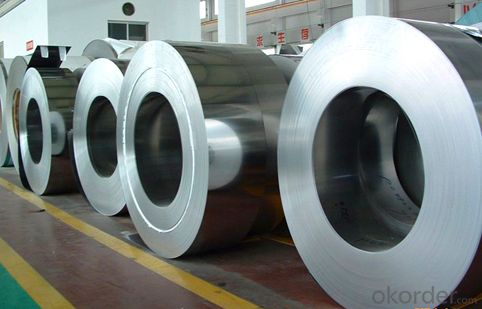
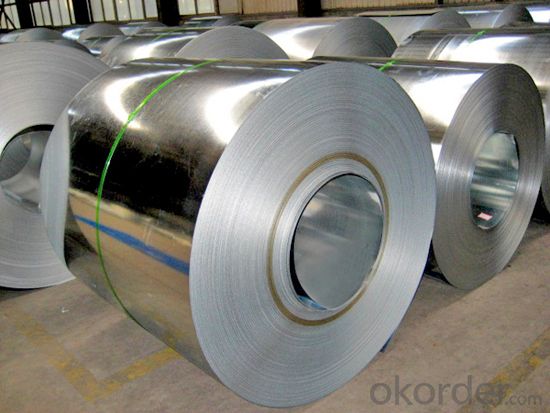
- Q:How do stainless steel strips perform in corrosive marine environments?
- Stainless steel strips perform exceptionally well in corrosive marine environments due to their inherent resistance to corrosion. The chromium content in stainless steel forms a passive protective layer, preventing the strips from rusting and maintaining their structural integrity even in highly corrosive conditions.
- Q:Are stainless steel strips suitable for cryogenic valves?
- Yes, stainless steel strips are suitable for cryogenic valves. Stainless steel is known for its excellent resistance to low temperatures and is commonly used in cryogenic applications. It has a high strength-to-weight ratio, good thermal conductivity, and exceptional corrosion resistance, making it ideal for use in cryogenic systems. Additionally, stainless steel strips can be fabricated and formed into various shapes and sizes, providing flexibility in designing cryogenic valve components. Overall, stainless steel strips are a reliable and durable choice for cryogenic valves.
- Q:What is the impact strength of stainless steel strips?
- The impact strength of stainless steel strips can vary depending on the specific grade and composition of the stainless steel. Stainless steel is generally known for its excellent strength and durability, and this includes its impact resistance. Stainless steel strips are commonly used in various industries such as construction, automotive, and aerospace, where they are subjected to different types of impact forces. The high strength and toughness of stainless steel allow it to withstand impact and resist deformation, making it suitable for applications that require a material with good impact resistance. However, it is important to note that the impact strength of stainless steel can also be influenced by factors such as the thickness of the strip, the heat treatment applied to the material, and any surface coatings or treatments that may have been applied. Additionally, different grades of stainless steel can have varying impact strengths. To determine the exact impact strength of stainless steel strips, it is necessary to refer to specific material data sheets or conduct laboratory testing according to relevant industry standards. These tests can provide quantitative measurements of impact resistance, such as the ability of the material to withstand a certain level of force without fracturing or breaking.
- Q:What are the common uses of stainless steel strips in the automotive suspension systems?
- Various purposes necessitate the common usage of stainless steel strips in automotive suspension systems. One of the primary applications lies in the manufacturing of leaf springs, which form an integral part of said suspension system. Leaf springs possess the responsibility of absorbing shocks and preserving the stability of the vehicle. Stainless steel strips offer ideal material qualities for leaf springs, including excellent durability, resistance to corrosion, and high tensile strength. Moreover, the production of coil springs heavily relies on the utilization of stainless steel strips. Coil springs play a crucial role in supporting the vehicle's weight and providing a smooth ride. Stainless steel's exceptional strength-to-weight ratio enables the creation of lightweight coil springs capable of withstanding heavy loads and maintaining their shape over time. Additionally, sway bars or stabilizer bars are fabricated using stainless steel strips. These bars are responsible for minimizing body roll and enhancing the vehicle's handling during cornering. The exceptional strength and resistance to deformation exhibited by stainless steel make it a suitable material for sway bars, thus ensuring optimal performance and longevity. Furthermore, suspension brackets, hangers, and other components that necessitate high strength and resistance to corrosion find application of stainless steel strips. These components are vital for maintaining the structural integrity of the suspension system and ensuring the safe operation of the vehicle. In conclusion, the exceptional mechanical properties, corrosion resistance, and durability of stainless steel strips make them widely employed in automotive suspension systems. They play a vital role in enhancing the performance, stability, and safety of vehicles on the road.
- Q:What is the maximum thickness available for stainless steel strips?
- The maximum thickness available for stainless steel strips can vary, but it is typically around 6mm to 8mm.
- Q:What are the different types of surface patterns for stainless steel strips?
- Stainless steel strips can be adorned with various surface patterns, catering to specific aesthetic and functional preferences. Among the commonly used patterns are: 1. Brushed Finish: This particular pattern involves brushing the steel surface with a fine abrasive material, resulting in a consistent linear pattern. It offers a sleek and sophisticated appearance while reducing the visibility of scratches and fingerprints. 2. Mirror Finish: As the name implies, mirror finish creates a highly reflective and lustrous surface on stainless steel strips. Through meticulous polishing, the steel attains a mirror-like appearance. This pattern is often employed in applications where visual appeal is paramount, such as architectural and decorative elements. 3. Embossed Pattern: Embossed patterns are achieved by pressing or rolling stainless steel strips through a textured roller. This process creates raised designs or textures, enhancing visual appeal and adding a unique touch. Embossed patterns can range from simple geometric shapes to intricate designs. 4. Perforated Pattern: Perforated stainless steel strips feature evenly distributed small holes or perforations on the surface. This pattern not only adds visual interest but also offers functional benefits such as improved ventilation, light diffusion, and acoustic properties. It finds common usage in architectural and industrial applications. 5. Diamond Pattern: Resembling a series of small diamonds, this raised pattern is achieved by embossing the stainless steel strips with a diamond-shaped design. It provides excellent slip resistance, making it suitable for surfaces requiring traction, like walkways, stairs, and industrial flooring. 6. Linen Pattern: Linen pattern imparts a textured surface to stainless steel strips, akin to the appearance and tactile sensation of linen fabric. Achieved by rolling the strips through a patterned roller, it introduces a subtle linear texture. Linen pattern adds visual interest and can help conceal minor surface imperfections. These examples represent only a fraction of the diverse surface patterns that can be applied to stainless steel strips. Each pattern possesses unique characteristics and advantages, enabling a plethora of applications across various industries and settings.
- Q:Can stainless steel strips be used in conveyor systems?
- Yes, stainless steel strips can be used in conveyor systems. Stainless steel is known for its durability, corrosion resistance, and high strength, making it suitable for conveying various materials in industries such as food processing, manufacturing, and mining. Stainless steel strips can withstand heavy loads and harsh environments, making them an ideal choice for conveyor applications.
- Q:Can stainless steel strips be easily welded?
- Yes, stainless steel strips can be easily welded.
- Q:Can stainless steel strips be used for solar water heaters?
- Yes, stainless steel strips can be used for solar water heaters. Stainless steel is a durable and corrosion-resistant material that can withstand the harsh conditions of solar water heating systems. It is commonly used for the construction of the collector panels, heat exchangers, and pipes in solar water heaters.
- Q:What are the different certifications and standards for stainless steel strips?
- There are several certifications and standards for stainless steel strips, including ASTM (American Society for Testing and Materials) standards, EN (European Norm) standards, and ISO (International Organization for Standardization) certifications. These standards and certifications ensure that stainless steel strips meet specific requirements for composition, mechanical properties, and performance, ensuring their quality and suitability for various applications.
1. Manufacturer Overview |
|
|---|---|
| Location | |
| Year Established | |
| Annual Output Value | |
| Main Markets | |
| Company Certifications | |
2. Manufacturer Certificates |
|
|---|---|
| a) Certification Name | |
| Range | |
| Reference | |
| Validity Period | |
3. Manufacturer Capability |
|
|---|---|
| a)Trade Capacity | |
| Nearest Port | |
| Export Percentage | |
| No.of Employees in Trade Department | |
| Language Spoken: | |
| b)Factory Information | |
| Factory Size: | |
| No. of Production Lines | |
| Contract Manufacturing | |
| Product Price Range | |
Send your message to us
Stainless Steel Coil 304/316 Hot / Cold Rolled Grade NO.1
- Loading Port:
- Tianjin
- Payment Terms:
- TT OR LC
- Min Order Qty:
- 20 m.t.
- Supply Capability:
- 4000 m.t./month
OKorder Service Pledge
OKorder Financial Service
Similar products
New products
Hot products
Related keywords


